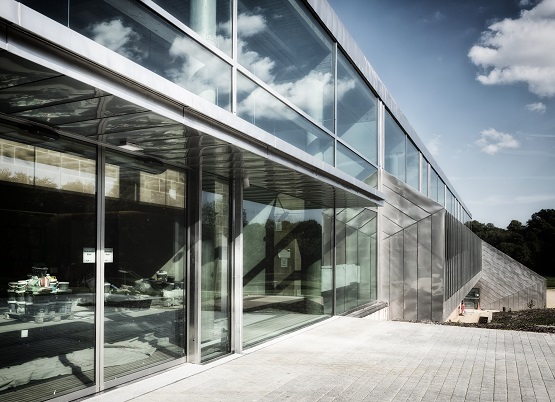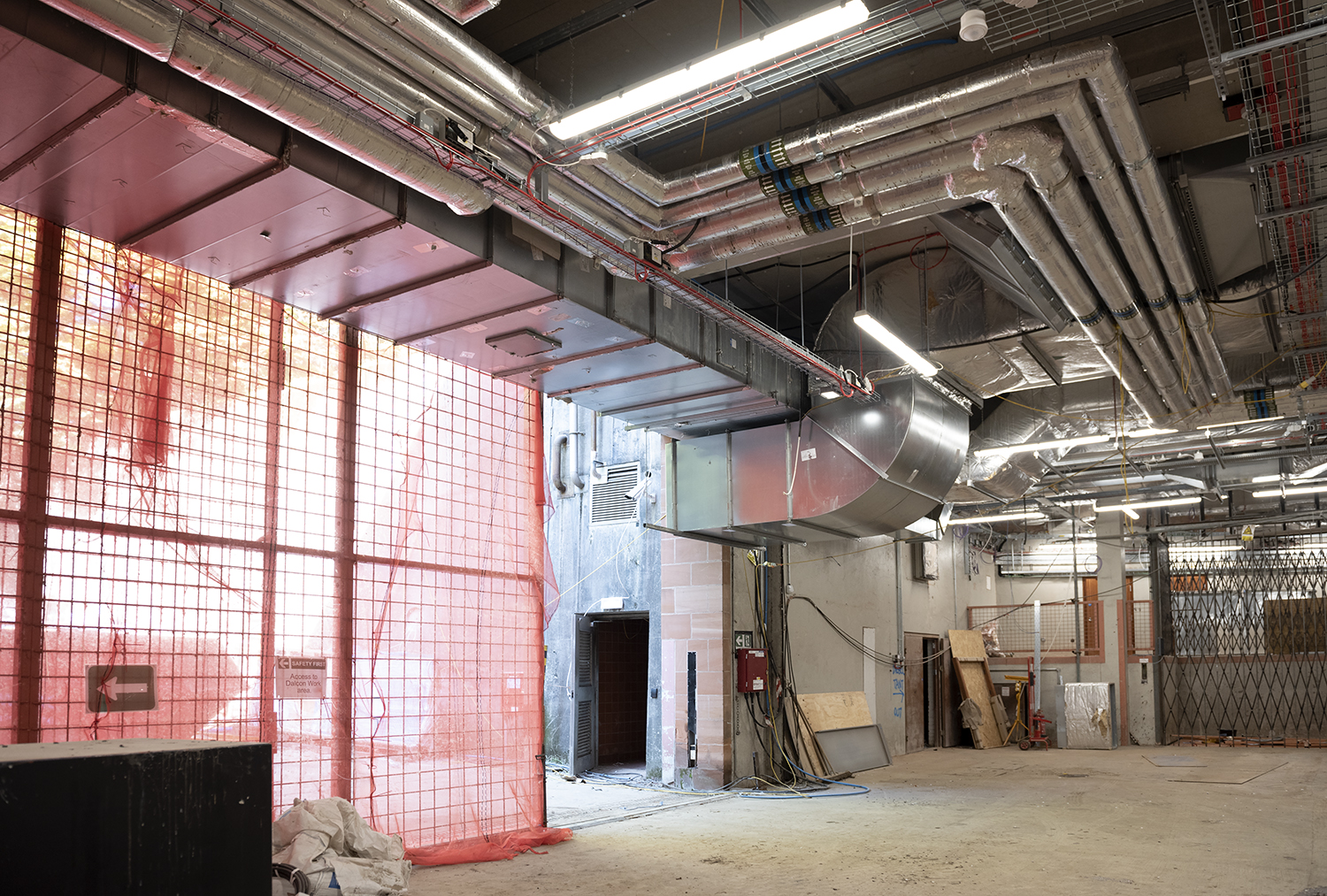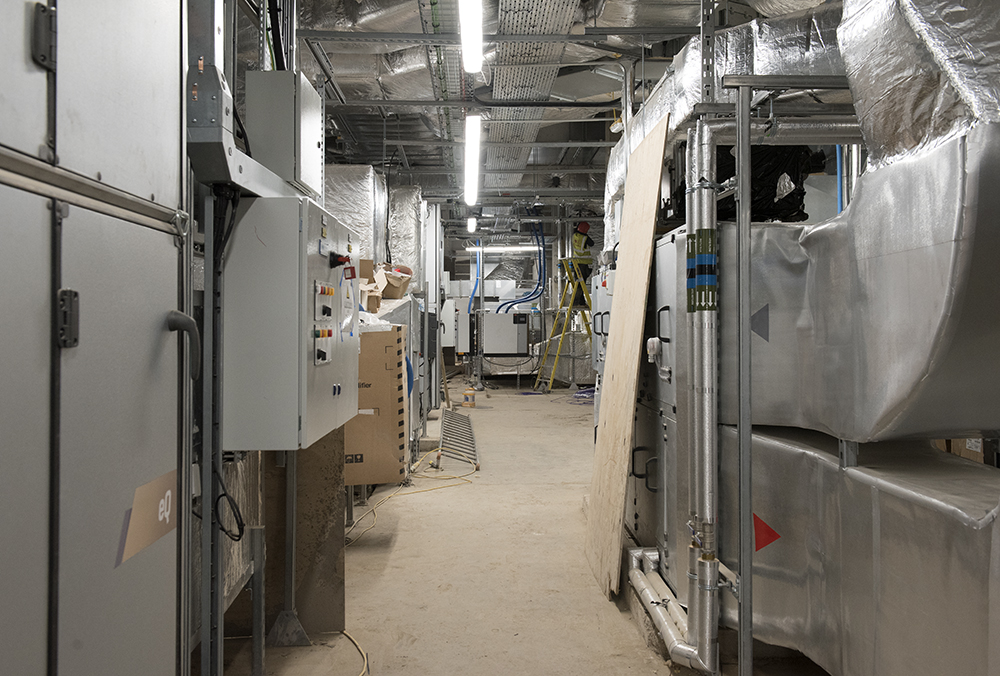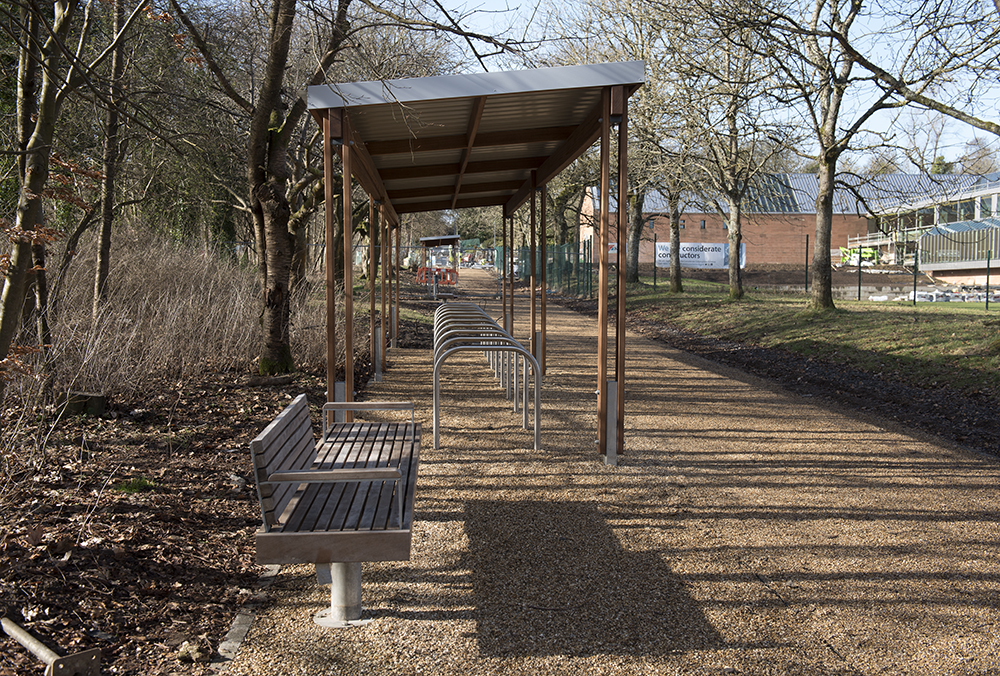The Burrell Collection is reaching new standards in sustainability
[edit] The Burrell Collection, in Glasgow, Scotland, will reopen next March (2022) in a refurbished and reimagined A-listed building that will help set new standards for sustainability in museums.
The ambitious redisplay of one of the greatest global art collections ever amassed by one person, is taking place inside an improved and upgraded building for the future, charity Glasgow Life has confirmed.
The Burrell Collection closed to the public in 2016 for the refurbishment which has been taking place since then. Shutdowns of the site and new practices introduced because of the global pandemic caused delays.
The refurbished building, with new gallery spaces, displays and facilities will be an exemplar of sustainable low carbon design. The museum’s environmental performance has been enhanced by greatly improving the building’s exterior and by replacing power, heating and lighting systems with more efficient sustainable technologies. Subject to formal validation, it is anticipated that a BREEAM rating of Excellent will be achieved.
Glasgow City Council leader, Councillor Susan Aitken said: “The Burrell Collection is globally appreciated for its breadth, beauty and exceptional quality. Glasgow’s ambition is to give it the home it needs for the generations to come, giving the objects a more secure environment, while at the same time being more sustainable. The changes made to the fabric of the building to make it more air-tight and water-tight, and new glazing make it far less susceptible to changes in heat, and the upgrades of plant and systems means the building will be far more efficient, and able to take advantage of new technologies in the future to lessen its impact further. The project is realising a new, more sustainable future for The Burrell Collection and will keep searching for ways to improve the building’s performance further when it opens.”
Working to a design by John McAslan + Partners and with the services and energy strategy developed by Atelier 10, the building’s environmental performance and sustainability has been improved by:
- Repairing and replacing the glazing and the roof to improve the thermal envelope performance by approximately 50%. This is critical for a museum due to the stringent temperature and humidity control needed for conservation.
- The new facades thermal credentials are further improved through an enhanced air permeability performance that exceeds that expected of most new buildings.
- Enhancing the energy performance of key central plant items such as air handling units, pump sets and lighting controls.
- Installing new intelligent controls to result in ventilation based on demand, allowing the air handlers to slow down or switch off when air treatment is not required.
- Variable flow chilled and hot water distribution helping deliver water for heating and cooling as and when needed.
- New chillers with heat recovery reclaiming waste that would otherwise be disposed of in the atmosphere now being used to heat the entrance.
- A high degree of metering providing a better understanding of where energy is being used.
- New low energy lighting systems and improved controls.
- More than 80 separate energy use monitors checking the performance of the building.
- World leading energy modelling experts, Integrated Environmental Solutions, will continue to model the most effective energy performance for ongoing sustainability post-opening.
- A large array of solar panels generates a peak electricity supply of 140kW to provide carbon-free power to both the building and electric vehicles within the wider Pollok Country Park.
- New onsite energy storage through an integrated battery to maximise solar panel provision and to provide resilience.
- Display structures designed to be flexible and reusable making them more sustainable, but also easier to change in response to new research and audience interest.
Over and above the retention of the main superstructure, all materials removed from the building were recycled, including stainless steel cladding, insulation and all of the glass. Overall 3,120m2 of glass was removed from site and recycled. The estimated saving from this is 27.53 tonnes of carbon dioxide – the equivalent of driving between Glasgow and London 118 times.
David Cameron, Director of Atelier Ten said: “Transforming a Grade-A listed museum building of national importance such as The Burrell Collection brings many challenges but the aim of producing an environmental responsive and low energy solution always gave momentum to meet and overcome these challenges. The refurbishment of the façade: the very skin of the building, which acts to protect the interior environment against Glasgow’s notoriously inclement weather, demonstrates the significant work which has gone into improving the building. Thermal performance is being enhanced by approximately 50% as a result of the changes made, cloaking the building in a protective 'jacket' for the foreseeable future and ensuring the exceptional collection is kept in the best conditions.”
Pollok Country Park’s Active Travel Management Plan, which has been developed alongside the building refurbishment, will improve access to The Burrell Collection, the park and its other attractions, for visitors travelling by public transport, bike or on foot. This delivers an improved path network and associated signage, bike hire and bike racks, an electric shuttle bus, as well as electric car charging points.
[edit] Related articles on Designing Buildings
Featured articles and news
The UK’s largest air pollution campaign.
BSRIA Briefing: Cleaner Air, Better tommorrow
A look back at issues relating to inside and outside air quality, discussed during the BSRIA briefing in 2023.
Restoring Abbotsford's hothouse
Bringing the writer Walter Scott's garden to life.
Retired firefighter cycles world to raise Grenfell funds
Leaving on 14 June 2025 Stephen will raise money for youth and schools through the Grenfell Foundation.
Key points for construction at a glance with industry reactions.
Functionality, visibility and sustainability
The simpler approach to specification.
Architects, architecture, buildings, and inspiration in film
The close ties between makers and the movies, with our long list of suggested viewing.
SELECT three-point plan for action issued to MSPs
Call for Scottish regulation, green skills and recognition of electrotechnical industry as part of a manifesto for Scottish Parliamentary elections.
UCEM becomes the University of the Built Environment
Major milestone in its 106-year history, follows recent merger with London School of Architecture (LSE).
Professional practical experience for Architects in training
The long process to transform the nature of education and professional practical experience in the Architecture profession following recent reports.
A people-first approach to retrofit
Moving away from the destructive paradigm of fabric-first.
International Electrician Day, 10 June 2025
Celebrating the role of electrical engineers from André-Marie Amperè, today and for the future.
New guide for clients launched at Houses of Parliament
'There has never been a more important time for clients to step up and ...ask the right questions'
The impact of recycled slate tiles
Innovation across the decades.
EPC changes for existing buildings
Changes and their context as the new RdSAP methodology comes into use from 15 June.
Skills England publishes Sector skills needs assessments
Priority areas relating to the built environment highlighted and described in brief.
BSRIA HVAC Market Watch - May 2025 Edition
Heat Pump Market Outlook: Policy, Performance & Refrigerant Trends for 2025–2028.
Committing to EDI in construction with CIOB
Built Environment professional bodies deepen commitment to EDI with two new signatories: CIAT and CICES.
Government Grenfell progress report at a glance
Line by line recomendation overview, with links to more details.
An engaging and lively review of his professional life.
Sustainable heating for listed buildings
A problem that needs to be approached intelligently.
50th Golden anniversary ECA Edmundson apprentice award
Deadline for entries has been extended to Friday 27 June, so don't miss out!
CIAT at the London Festival of Architecture
Designing for Everyone: Breaking Barriers in Inclusive Architecture.


































